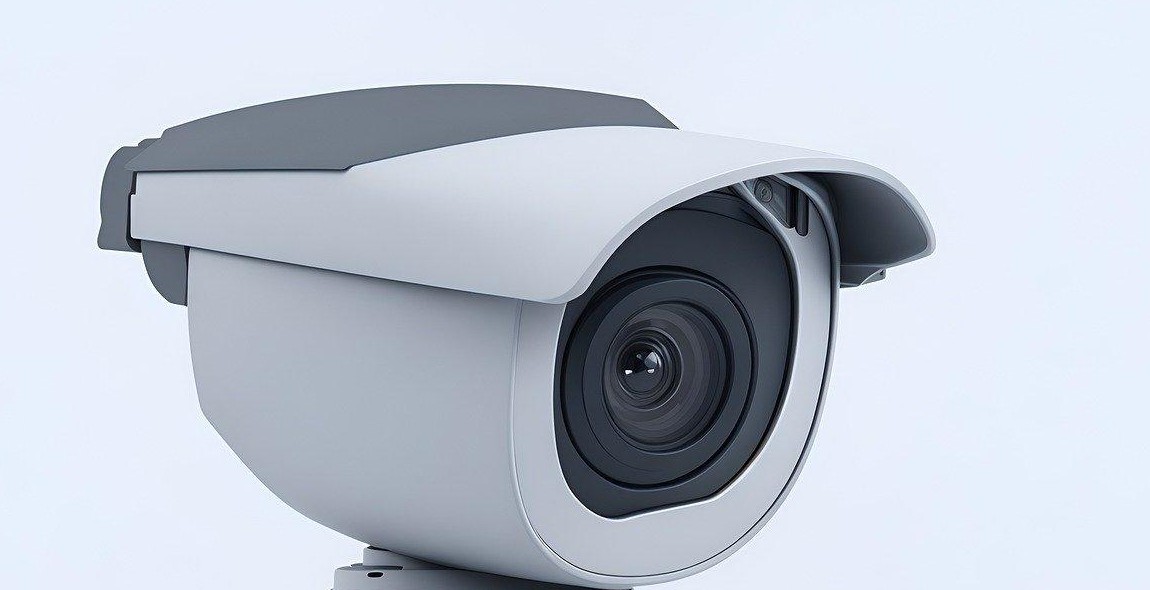Introduction
In today’s digital age, artificial intelligence (AI) has become an integral part of our lives, revolutionizing industries and transforming the way we interact with technology. From personalized recommendations to virtual assistants, AI has brought unprecedented convenience and efficiency. However, as AI continues to advance, concerns about privacy have grown exponentially.
The importance of AI and privacy
AI has the potential to analyze vast amounts of data and extract valuable insights, enabling businesses to make informed decisions and improve customer experiences. However, this data-driven approach raises concerns about the privacy and security of personal information. With AI systems constantly collecting and analyzing data, there is a risk of unauthorized access, misuse, and potential breaches of privacy.
The growing concerns about privacy in the age of AI
As AI technologies become more sophisticated, the potential for intrusion into personal lives becomes a significant concern. The collection and analysis of personal data, including browsing habits, social media interactions, and location information, raise questions about the extent to which individuals can maintain their privacy. Additionally, the use of facial recognition, biometric data, and surveillance technologies further heighten concerns about the erosion of privacy in society.
In this article, we will explore the delicate balance between AI innovation and privacy, examining the challenges and potential solutions to navigate this thin line. By understanding the importance of AI and privacy and acknowledging the growing concerns, we can work towards a future where innovation and privacy coexist harmoniously.

The Benefits of AI in Various Industries
AI in Healthcare
Artificial Intelligence has revolutionized the healthcare industry, providing numerous benefits that have transformed patient care and medical research. AI-powered systems can analyze vast amounts of patient data to identify patterns and predict potential health risks. This enables healthcare professionals to make accurate diagnoses and develop personalized treatment plans.
Additionally, AI has enhanced medical imaging techniques, enabling more precise and efficient diagnoses. Machine learning algorithms can analyze medical images to detect abnormalities and assist radiologists in detecting diseases at an early stage.
Furthermore, AI-powered chatbots and virtual assistants are being used to improve patient engagement and provide 24/7 support. These virtual assistants can answer common medical questions, schedule appointments, and remind patients to take their medication.
AI in Finance
The finance industry has also embraced AI, leveraging its capabilities to streamline operations, improve risk management, and enhance customer experiences. With AI-powered algorithms, financial institutions can analyze vast amounts of data in real-time, enabling them to make more accurate predictions and informed investment decisions.
AI chatbots are being used to provide personalized financial advice and assist customers in managing their finances. These virtual assistants can analyze spending patterns, recommend budgeting strategies, and provide insights on investment opportunities.
Moreover, AI algorithms are utilized to detect fraudulent activities and prevent financial crimes. These algorithms can identify suspicious transactions and flag potential risks, enabling financial institutions to take proactive measures to protect their customers’ assets.
AI in Transportation
The transportation industry has greatly benefited from AI advancements, leading to enhanced safety, efficiency, and sustainability. AI-powered systems are being used to optimize traffic management, reducing congestion and improving the flow of vehicles on roads.
Autonomous vehicles, enabled by AI, have the potential to transform transportation by reducing accidents caused by human error and improving fuel efficiency. Self-driving cars can analyze real-time traffic data and make split-second decisions to ensure safe and efficient transportation.
Furthermore, AI algorithms are used for predictive maintenance in the transportation sector. By analyzing data from sensors and monitoring systems, AI can detect potential issues in vehicles or infrastructure, allowing for proactive maintenance and reducing costly breakdowns.
Overall, AI has proven to be a game-changer in various industries, including healthcare, finance, and transportation. Its ability to analyze vast amounts of data, make accurate predictions, and automate processes has transformed the way these industries operate, leading to improved efficiency, better decision-making, and enhanced customer experiences.
The Intrusion Dilemma: Balancing Innovation and Privacy
In today’s rapidly advancing digital landscape, the use of artificial intelligence (AI) has become increasingly prevalent. While AI offers numerous benefits and opportunities for innovation, it also raises significant concerns regarding privacy intrusion. Striking a balance between innovation and privacy has become a pressing dilemma that requires careful consideration.
Data Collection and Privacy Concerns
One of the primary concerns surrounding AI and privacy is the vast amount of data collected by AI systems. As AI relies on data to learn and make informed decisions, the collection of personal information becomes inevitable. This raises concerns about the security and confidentiality of individuals’ data, as well as the potential for misuse or unauthorized access.
Ethical Considerations in AI Development
Developing AI systems ethically is crucial to address the intrusion dilemma. It is essential to consider the potential impact of AI on individuals’ privacy and ensure that AI algorithms and models are designed to protect personal data. Ethical guidelines should be established to govern the development and deployment of AI systems, ensuring transparency, accountability, and fairness in their operation.
Regulatory Frameworks for AI and Privacy
To address the intrusion dilemma effectively, regulatory frameworks must be established to govern the use of AI and protect individuals’ privacy rights. These frameworks should outline clear guidelines for data collection, storage, and usage, as well as mechanisms to obtain informed consent from individuals. Additionally, they should include provisions for auditing AI systems to ensure compliance with privacy regulations.
Furthermore, regulatory frameworks should encourage collaboration between stakeholders, including government agencies, industry leaders, and privacy advocates. This collaboration can help establish industry standards and best practices for AI development that prioritize privacy protection while still fostering innovation.
In conclusion, the intrusion dilemma posed by AI requires a delicate balance between innovation and privacy. Data collection and privacy concerns, ethical considerations, and regulatory frameworks are essential aspects to be addressed to navigate this thin line successfully. By finding this delicate equilibrium, we can harness the power of AI while safeguarding individuals’ privacy rights and fostering responsible innovation.

Protecting Privacy in an AI-Driven World
In today’s rapidly advancing technological landscape, the rise of artificial intelligence (AI) has brought both innovative solutions and concerns regarding the protection of privacy. As AI systems become increasingly pervasive, it is crucial to establish robust measures to safeguard individuals’ personal information and maintain their privacy rights.
Transparency and Explainability in AI Systems
One key aspect of protecting privacy in an AI-driven world is ensuring transparency and explainability in AI systems. Organizations must be transparent about the data they collect, how it is used, and the algorithms employed in their AI applications. By providing clear explanations of the decision-making processes, individuals can better understand how their data is being utilized and make informed choices regarding their privacy.
Enhancing Data Privacy and Security Measures
Enhancing data privacy and security measures is paramount in safeguarding personal information in the realm of AI. Organizations must implement robust security protocols to protect data from unauthorized access and breaches. Encryption techniques and anonymization methods can be employed to ensure that sensitive information remains confidential, even in AI training and inference processes.
User Control and Consent in AI Applications
User control and consent play a crucial role in protecting privacy in an AI-driven world. Individuals should have the ability to exercise control over their data, including the ability to access, modify, and delete it. Organizations should provide clear and understandable consent mechanisms, allowing individuals to make informed decisions about the collection and usage of their personal information in AI applications.
Moreover, it is essential for organizations to establish mechanisms that allow individuals to easily opt-out or withdraw consent at any time. This empowers individuals to maintain control over their data and ensures that their privacy preferences are respected.
In conclusion, protecting privacy in an AI-driven world requires a multi-faceted approach. Transparency and explainability in AI systems, enhancing data privacy and security measures, and user control and consent all play vital roles in maintaining individuals’ privacy rights. By implementing these measures, we can strike a balance between innovation and intrusion, fostering trust and confidence in the AI ecosystem.

The Role of Government and Industry in Safeguarding Privacy
Protecting privacy in the era of artificial intelligence (AI) requires a joint effort between government regulations and policies, as well as collaboration between industry and privacy advocates. Both parties play a crucial role in ensuring that privacy remains a priority while still fostering innovation.
Government Regulations and Policies
The government has a responsibility to establish comprehensive regulations and policies that address privacy concerns in the AI landscape. These regulations should outline clear guidelines for data collection, usage, storage, and sharing practices. By setting legal boundaries, the government can prevent the misuse of personal information and hold organizations accountable for any privacy breaches.
Government regulations should also include provisions for transparency and consent. AI systems should be required to provide clear explanations of how data is being used and obtain explicit consent from users before collecting or analyzing their personal information. Additionally, regulations should address the challenges posed by cross-border data transfers to ensure that privacy standards are maintained globally.
Collaboration between Industry and Privacy Advocates
The collaboration between industry and privacy advocates is essential to strike a balance between innovation and privacy protection. Industry leaders should actively engage with privacy advocates, civil society organizations, and consumer groups to develop best practices and standards for AI technologies.
Regular dialogues and consultations can help identify potential privacy risks and find effective solutions. Industry should also invest in privacy-focused research and development to create AI systems that prioritize user privacy by design. Collaborations between technology companies and privacy advocates can lead to the development of privacy-enhancing tools and technologies, such as differential privacy and secure data anonymization techniques.
Furthermore, industry should work towards promoting transparency and accountability. This can be achieved by implementing privacy impact assessments, conducting independent audits, and establishing mechanisms for individuals to exercise their privacy rights. Collaboration with privacy advocates can ensure that these measures are effective and aligned with user expectations.
In conclusion, safeguarding privacy in the age of AI requires a partnership between government regulations and policies, as well as collaboration between industry and privacy advocates. By establishing comprehensive regulations and fostering ongoing collaboration, we can navigate the thin line between innovation and intrusion while ensuring that privacy remains protected.
Conclusion
In conclusion, the rapid advancement of artificial intelligence (AI) technology has brought both innovation and concerns about privacy intrusion. While AI has the potential to revolutionize various industries and improve our lives, it also raises important ethical and privacy issues that need to be addressed.
Throughout this article, we have explored the various ways AI can impact privacy, such as through data collection, surveillance, and algorithmic biases. It is crucial for individuals, organizations, and policymakers to navigate the thin line between innovation and intrusion to ensure that AI is used responsibly and respects privacy rights.
To strike a balance, proactive measures must be taken. First, policymakers need to establish clear regulations and guidelines for AI development and usage, ensuring that privacy is protected and individuals have control over their personal data. Second, organizations should adopt privacy-by-design principles, embedding privacy safeguards into AI systems from the early stages of development.
Additionally, individuals must be aware of the privacy risks associated with AI and take steps to protect their personal information. This includes being cautious about the data they share, understanding the privacy policies of AI-powered services, and using privacy-enhancing technologies whenever possible.
Ultimately, creating a privacy-conscious AI ecosystem requires collaboration between technology developers, policymakers, and individuals. By embracing innovation while safeguarding privacy, we can fully harness the potential of AI while ensuring that our fundamental rights are respected.
